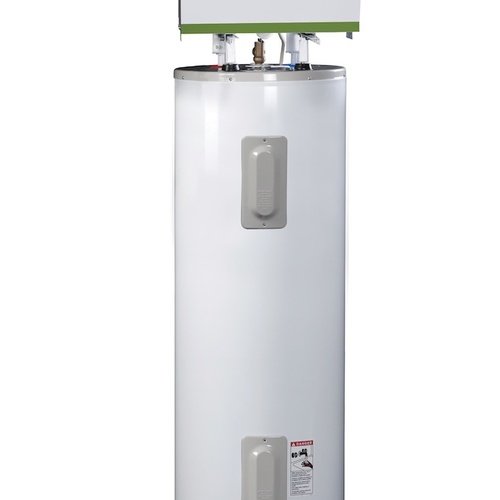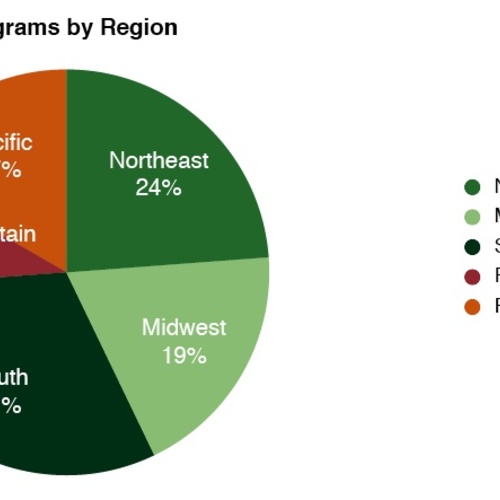
A broad coalition representing millions of Americans earlier this month urged Congress to modernize and extend expired energy efficiency tax incentives, touting the enormous, long-term benefits for both the industry and U.S. consumers.
The coalition is comprised of environmental and efficiency groups, including the Natural Resources Defense Council, alongside leading manufacturers of windows, air conditioners, insulation, and other efficiency components that generate a significant number of U.S. jobs. (In total, energy efficiency supports 2.3 million U.S. workers.)
Energy efficiency is generally considered the most effective solution for addressing climate change. But as the letter addressed to House and Senate leaders points out, three efficiency incentives expired on Dec. 31, 2017, leaving the tax code without any direct inducements to cut energy waste.
Meanwhile these incentives, as originally written, are outdated. They reference older building codes or efficiency thresholds, and offer dollar amounts that don’t reflect the current market prices for building technologies and high-efficiency equipment, the letter notes. For example, the incentive to buy a high-efficiency air conditioning system is capped at $300, which isn’t enough to meaningfully affect purchasing decisions on equipment and installation that often runs $10,000 or more.
However, the letter says, this “glaring and urgent omission” also represents a golden, bipartisan opportunity. Not only would implementing efficiency credits significantly lower carbon emissions, it would also reduce energy costs for consumers, stimulate job creation, and promote economic opportunity. Tax credits have a proven track record of driving clean energy investments at minimal cost to taxpayers, so lawmakers should be eager to get on board.
But because tax incentives have repeatedly expired and been reinstated, consumers, manufacturers, and contractors have found themselves uncertain about their availability, and unable to plan upgrades to the energy efficiency of their buildings accordingly.
Thus, the letter also urges Congress to pass a “forward-looking, multi-year extension” that would offer a sense of security to get the most of out of the incentives.
The letter calls for increased maximum credits for both new home construction under the Section 45L Energy Efficient Home Credit, as well as homeowner efficiency improvements under the Section 25C Nonbusiness Energy Property Credit for existing homes. It also supports a “modernized, forward-looking, multi-year extension” of the Section 179D incentive for commercial building efficiency improvements.
Acting now will cut energy waste for decades
Homes and buildings constructed or renovated today will still be in use 50 or 100 years from now; energy-intensive equipment like air conditioners and furnaces will be used for a decade or longer. Because the residential and commercial sector accounts for 40% of U.S. energy consumption, failing to update these incentives now guarantees unnecessary energy waste and carbon emissions for many decades to come. Improved efficiency, on the other hand, will save businesses and consumers hundreds of millions of dollars annually on energy bills, reduce the demand on the utility grid, and make the U.S. more economically competitive.
The letter makes note of evidence showing that incentives are utilized more when they are set at meaningful dollar amounts. Under the American Recovery and Reinvestment Act, efficiency incentives for home improvements were increased, and nearly 7 million taxpayers claimed them in 2010. In the following years, that number fell to just 2.2 million in 2015, after the incentives dropped to pre-stimulus levels.
Proposed changes
Previously, the 45L Energy Efficient Home Credit provided builders up to $2,000 for homes that use 50% less energy than 2006 building codes for heating and cooling and a $1,000 tax credit for new manufactured homes that achieved 30% energy savings for heating and cooling or met Energy Star requirements. The proposed increase supported by the group would raise the maximum credit to $2,500 for new homes that meet requirements. Since 45L was enacted in 2005, the number of homes that qualified by using 30% to 50% less energy on heating and cooling rose from less than 1% to around 11%.
Similarly, the 25C incentive previously provided a 10% tax credit for the purchase of certain nonbusiness energy-efficient measures up to $500. In 2015, more than $1.6 billion in tax credits were claimed by homeowners who invested in clean energy improvements, with over two-thirds of the benefits going to households with gross incomes under $100,000. The new proposal would raise incentives to provide a 15% tax credit up to $1,200, and also see some individual product category caps eliminated or raised, which would allow homeowners to do multiple projects.
Efficiency tax incentives are especially crucial now, as the Trump administration continues its push for more climate-polluting fossil fuels while attempting to undermine the excellent and important progress on energy efficiency.
The International Energy Agency reports that efficiency alone can account for at least 40% of the emissions reductions needed to meet global targets. Restoring and improving these incentives offers a bipartisan opportunity that would accomplish goals across the board.
Weekly Newsletter
Get building science and energy efficiency advice, plus special offers, in your inbox.














21 Comments
There should be an incentive to get windows like Alpen's energy efficient windows with a whole window NFRC rating of U-Value of 0.12. Instead of just getting code minimum U-Value of 0.32 currently out there. The Alpen has a center of glass at U-Value 0.07 or R-14. Pretty amazing energy efficient products out there.
Typo:
"the 45L Energy Efficient Home Credit provided builders up to $2,000 for homes that use 50% less energy than 2016 building codes for heating and cooling"
This should read "2006 building codes"
Agreed though, cutting energy waste in our existing housing stock is one of the most difficult tasks we have ahead of us. It's going to be hard and not going to be cheap (if we do it right), and right now the way that homes are valued is working against us, so we're going to need incentives.
The problem with incentives is that they distort the market by driving up the price of a particular good/service.
If the market can't sustain itself without the subsidy/incentive then the consumer doesn't see value in the product.
Why should governments tax me so they can pay you to upgrade your home? That's the essence of these proposals that are all cloaked in buzz words and bafflegab. If you disagree with me putting it this way, then turn it around; do you want to pay increased taxes to upgrade my home? Shouldn't this be my responsibility?
I'd happily pay increased taxes so that you and other people could upgrade their homes so that we can collectively reduce our consumption of fossil fuels.
Home energy use doesn't just affect the home owner. It affects everyone. And using taxes to address issues like global warming and pollution seems like a very reasonable way to use taxes to me.
Because there's no immediate, individual benefit to reducing one's personal greenhouse gas emissions, leaving it up to individual responsibility seems foolish. We need to work together.
> do you want to pay increased taxes to upgrade my home?
Because your energy expenditures don't include all of the damage to the collectively owned environment, I'm already subsidizing you. Why would I object to shifting that subsidy to something more cost effective?
>"...do you want to pay increased taxes to upgrade my home? Shouldn't this be my responsibility?"
SURE it's your responsibility, but not SOLELY your responsibility, (for the reasons mentioned by Brendan & Jon.)
Many homeowners & building owners don't have sufficient cash or credit for making good on that responsibility without subsidy. Even where the building/home owners do have adequate cash & credit, a subsidy nudges them to act, or perhaps act sooner.
Pretending that energy markets are somehow "free", devoid of governmental influence, and that subsidizing energy efficiency "distorts" that pure market requires a suspension of disbelief beyond anything I can personally muster. YMMV- but if so it doesn't take a extensive research to disprove those notions, even without placing valuation on currently unpaid externalities of energy production & use.
>" Even where the building/home owners do have adequate cash & credit, a subsidy nudges them to act, or perhaps act sooner."
bingo. The literal meaning of "incentive" hits home. :)
The government taxes me to fund needless wars that end in wasted and shattered lives. I don't want to pay for the military industrial complex but my taxes go to fund that. Billions of tax dollars gets wasted.
I would rather have my tax dollars go to improving peoples homes than funding stupid wars.
We just remembered the 75th anniversary of the invasion at Normandy to retake Europe from disaster. I'll put that down as a stupid war.
Wes,
Most of the wars after WW2 were "stupid wars" that cost the lives of US men and women for no good cause. The Gulf of Tonkin incident was taken out of the Adolph Hitler playbook. Hitler lied and claimed Poland attacked Germany in 1939 and Hitler used that false narrative to attack Poland and started WW2. The US lied about what happened with the North Vietnamese and this false narrative was used to justify starting the Vietnam War, which the US lost, both on record and the thousands of lives needlessly wasted for no reason.
After WW2 the US discovered that wars can be very profitable and so started the great military industrial complex.
Let's not also forget that General Patton said towards the end of WW2 that the US needed to stop attacking Germany and team up with Germany to take on the Russians.
The problem I have is the lower end and middle of the middle class are the ones that really need the help and these tax credits generally go to the people who do not need it.
Scott: Don't let the perfect become the enemy of the good. If a tax incentive causes a person of greater means to do the right thing sooner (or at all), there is still value in that. While addressing social issues such as wealth inequality may be a worthy goal, it's not the primary use of an energy/environmental policy tool, and it wouldn't be realistic to expect it to address those issues in a meaningful way. There are other types energy & conservation programs that are means tested, but the management overhead for running them isn't always "worth it".
@Peter: Disagree, at least on the emphasis on window update incentives. What is the R value gained from going from 2 to 3 panes versus $ needed for incentives? Versus air sealing a leaky house? I'll tell you: around here, it's $1,000 per window versus $1,000 to seal all leaks in the whole house!
+1 @Lauren, to Energy Star homes in the original article.
The DOE and EPA have plenty of _whole_ home goals to shoot for: Energy Star homes, Zero Energy Ready Homes, WaterSense, IndoorAir, Cold Climate guidelines, etc. that take into account comfort and safety instead of this myopia about window glazing. (I don't hate the window industry ... Pella has a factory in the next town over, but why does that upgrade always come up first?!)
All that needs to happen is WAPs (weatherization assistance programs) get enhanced with both incentives AND latest methods. Those programs are stuck in the 70s and 80s with weather stripping and fiber batts, and worse: no auditing of the (poor) job that gets done.
You are referring to remodels which is totally different than new builds. It doesn't cost $1k more per window to go from dual pane to triple pane on a new build. On a remodel, that's different because there are higher costs with removing and re-installing windows. When that cheapo dual pane window is installed on a new home and then for the next 20-30 years that window causes how much energy loss?
Sealing up a house that is already built and closed-in is difficult and expensive to do. Once again, this should be done during construction phase, not after.
@Peter, you betcha' I'm talking about retrofits. Homes built in 2000 consumed the same amount of energy as those built in the 60s! The EIA has data on this. If incentives primary target ONLY new builds it would take _generations_ to replace the inefficiently built home inventory in America. To only build it "right" sounds like someone is incentived the wrong way. We must focus on the inefficiencies in home inventory via retrofit incentives to get at things like the 2030,/2040/2050 climate goals because homes are 40-50% of the energy consumers in the US. Unless one of your incentive plans is to bulldoze & replace half the housing inventory in 30 years time!?
If GBA and DIY has taught me anything, sealing up air leaks is very expensive in time (and sweat), is labor intensive, but not materially expensive. Tubes of caulk / sealant vs triple pane window? I'm betting triple pane on material expense. And that point matters b/c incentives are usually material/parts, not time/labor. Either can be/are done incorrectly, and some simple Youtube searching or flashlight in my own home show that off, but that gets back to the point on auditing jobs that get done through any incentive program.
Caulk/Sealant isn't sexy. The Sealant guy at the trade show doesn't get all the environmental accolades from Tesla owners who are, like a moth to a flame, attracted to those cool looking triple-pane high-tech "Euro" windows.
LOL! ty for that.
John,
What's nice is that the triple and even quad pane windows are now made in the USA. Alpen manufacturers its windows in Colorado.
Clearly, the members of the "collective" have spoken. Individualists are persona non grata.
Don't conflate an "individualists" world view with that of a "narcissists" world view. Human societies are more than just a disaggregated collection of non-interacting monads. Individualists can still understand and take responsibility for the consequences of their actions (or inaction) on others, and can even agree to disagree over policy decisions and actions without taking it personally.
Log in or create an account to post a comment.
Sign up Log in